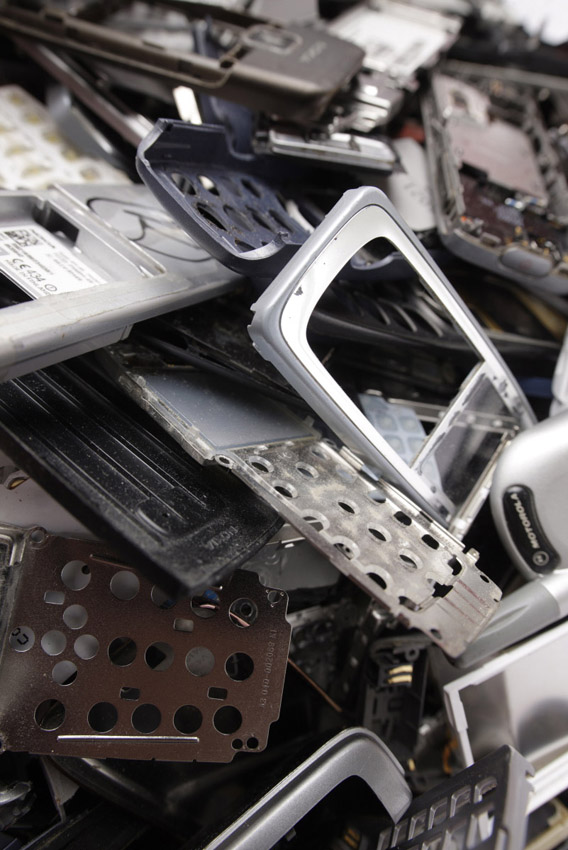Filter Recovers 80 Percent of Gold in Cell Phone Scrap

Cell phone scrap. Image: Antonin Halas
Cell phone scrap can contain precious metals, such as gold and copper. VTT Technical Research Centre of Finland has developed a biological filter, made of mushroom mycelium mats, enabling recovery of as much as 80 percent of the gold in electronic scrap. Extraction of copper from circuit board waste, on the other hand, can be enhanced significantly by floating the crushed and sieved material.
Although research into the biological methods is active, these are still rarely used in metal recovery chains. In a European “Value from Waste” project, VTT developed both biological and mechanical pre-treatment methods for more efficient recovery of precious metals from electronic waste. Other methods developed by researchers included recovery of gold from dissolved materials by biosorption and extraction, using as few harmful chemicals as possible.
Fungi catch gold and filter out impurities
VTT has developed a method that harnesses biosorbents, such as fungal and algae biomass, for the recovery of precious metals converted to a solution. In VTT tests, more than 80 percent of the gold in the solution adhered to the biomass, compared with only 10–20 percent of the harmful process chemicals.
The uniqueness of the method lies in the structure of the biomass. Different filament structures can be formed, for example, into biological filters, which makes further industrial processing of precious metals easier.
Gold also separates well in liquid-liquid extraction
The project developed a method with high extraction capacity for gold recovery, using the newest environmentally-friendly extraction reagents. In VTT experiments, it was possible to recover more than 90 percent of the metal solution dissolved from a circuit board with the help of functional ionic liquid. The method facilitates extraction of desired components from impurities.
Recovering copper from circuit boards by flotation
The new pre-treatment methods developed by VTT allow separation of most plastics and ceramics from waste. In VTT experiments, cell phones were crushed and the particles sieved and separated magnetically and by eddy current into circuit board fraction. Treating once more by crushing, sieving and flotation, resulted in a fraction with high concentration of valuable metals for solution extraction experiments. Flotation raised the copper content of circuit board fraction from 25 percent to 45 percent, while gold content increased by a factor of 1.5.
“Value from Waste” project
The growth of cleantech industry, the rise in the world market prices of metals, and concentration of metal production in China have resulted in a situation in which extraction of several metals from waste streams has become advisable even in Finland. Ever stricter recycling and utilization rates for electronic waste are also pushing the development of recycling technologies. The purpose of the EU project “Value from Waste” was to develop recovery processes on a more sustainable basis, to clean materials of impurities that reduce opportunities for further use, and to increase the amount of recovered materials.
The methods developed in the project included mechanical pre-treatment, solution extraction, use of biological methods and optimization of treatment chains. The new treatment methods will enable the metal refining industry to use cleaner electronic waste in larger amounts.
